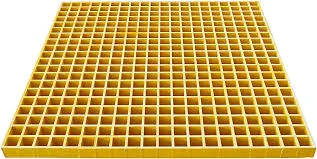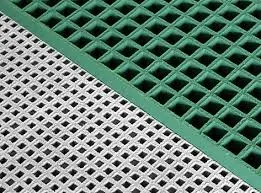
-
 Afrikaans
Afrikaans -
 Albanian
Albanian -
 Amharic
Amharic -
 Arabic
Arabic -
 Armenian
Armenian -
 Azerbaijani
Azerbaijani -
 Basque
Basque -
 Belarusian
Belarusian -
 Bengali
Bengali -
 Bosnian
Bosnian -
 Bulgarian
Bulgarian -
 Catalan
Catalan -
 Cebuano
Cebuano -
 China
China -
 China (Taiwan)
China (Taiwan) -
 Corsican
Corsican -
 Croatian
Croatian -
 Czech
Czech -
 Danish
Danish -
 Dutch
Dutch -
 English
English -
 Esperanto
Esperanto -
 Estonian
Estonian -
 Finnish
Finnish -
 French
French -
 Frisian
Frisian -
 Galician
Galician -
 Georgian
Georgian -
 German
German -
 Greek
Greek -
 Gujarati
Gujarati -
 Haitian Creole
Haitian Creole -
 hausa
hausa -
 hawaiian
hawaiian -
 Hebrew
Hebrew -
 Hindi
Hindi -
 Miao
Miao -
 Hungarian
Hungarian -
 Icelandic
Icelandic -
 igbo
igbo -
 Indonesian
Indonesian -
 irish
irish -
 Italian
Italian -
 Japanese
Japanese -
 Javanese
Javanese -
 Kannada
Kannada -
 kazakh
kazakh -
 Khmer
Khmer -
 Rwandese
Rwandese -
 Korean
Korean -
 Kurdish
Kurdish -
 Kyrgyz
Kyrgyz -
 Lao
Lao -
 Latin
Latin -
 Latvian
Latvian -
 Lithuanian
Lithuanian -
 Luxembourgish
Luxembourgish -
 Macedonian
Macedonian -
 Malgashi
Malgashi -
 Malay
Malay -
 Malayalam
Malayalam -
 Maltese
Maltese -
 Maori
Maori -
 Marathi
Marathi -
 Mongolian
Mongolian -
 Myanmar
Myanmar -
 Nepali
Nepali -
 Norwegian
Norwegian -
 Norwegian
Norwegian -
 Occitan
Occitan -
 Pashto
Pashto -
 Persian
Persian -
 Polish
Polish -
 Portuguese
Portuguese -
 Punjabi
Punjabi -
 Romanian
Romanian -
 Russian
Russian -
 Samoan
Samoan -
 Scottish Gaelic
Scottish Gaelic -
 Serbian
Serbian -
 Sesotho
Sesotho -
 Shona
Shona -
 Sindhi
Sindhi -
 Sinhala
Sinhala -
 Slovak
Slovak -
 Slovenian
Slovenian -
 Somali
Somali -
 Spanish
Spanish -
 Sundanese
Sundanese -
 Swahili
Swahili -
 Swedish
Swedish -
 Tagalog
Tagalog -
 Tajik
Tajik -
 Tamil
Tamil -
 Tatar
Tatar -
 Telugu
Telugu -
 Thai
Thai -
 Turkish
Turkish -
 Turkmen
Turkmen -
 Ukrainian
Ukrainian -
 Urdu
Urdu -
 Uighur
Uighur -
 Uzbek
Uzbek -
 Vietnamese
Vietnamese -
 Welsh
Welsh -
 Bantu
Bantu -
 Yiddish
Yiddish -
 Yoruba
Yoruba -
 Zulu
Zulu
Jan . 25, 2025 03:06
Back to list
fiberglass stack liner alternative
When it comes to industrial settings, the importance of stack liners cannot be overstated. Traditionally, fiberglass stack liners have been the go-to solution due to their impressive corrosion resistance and cost-effectiveness. However, as industries evolve, the need for alternative materials that offer enhanced performance, sustainability, and safety has become more pressing. The search for the perfect alternative involves understanding the limitations of fiberglass liners and embracing innovative materials that can stand up to the demands of modern industry.
Beyond endurance and thermal stability, safety is a paramount concern when it comes to stack liners. Traditional fiberglass liners pose certain risks, such as brittleness and the potential emission of harmful particles when damaged. In contrast, metal alloys like stainless steel and titanium offer robust alternatives. These materials are not only resilient to extreme environmental conditions but also exhibit high ductility and impact resistance, ensuring greater safety in industrial plants. Their ability to be fabricated to precise specifications allows for tailored solutions that meet specific industrial needs. A key consideration in choosing a stack liner alternative is sustainability. With growing awareness and regulations around carbon emissions and ecological footprint, industries are increasingly looking for greener solutions. Recycled materials or sustainably sourced alternatives, such as bio-based composites, are becoming attractive options. Bio-based composites derive from renewable resources, providing not only a sustainable option but also reducing dependency on finite resources. When designed properly, these materials can match or even exceed the performance of traditional fiberglass liners in certain applications. Implementing an alternative to fiberglass stack liners demands a thorough assessment of the specific industrial requirements and operational challenges. Analyzing factors like chemical exposure, temperature variations, and mechanical stress is crucial in determining the most suitable material. Collaborations with material scientists and industry experts can also provide invaluable insights, ensuring that the chosen alternative is not only effective but also economically viable. In conclusion, while fiberglass stack liners have historically dominated the industry, the search for alternatives is driven by the need for more durable, efficient, and environmentally friendly solutions. Fluoropolymer coatings, silicon carbide, ceramic matrix composites, metal alloys, and bio-based composites each offer unique advantages that can significantly enhance industrial operations. By prioritizing materials that promise greater longevity and safety, industries can reduce costs, improve performance, and contribute to a more sustainable future. As technology advances, the exploration of innovative materials continues to present new opportunities for optimizing industrial stack solutions.


Beyond endurance and thermal stability, safety is a paramount concern when it comes to stack liners. Traditional fiberglass liners pose certain risks, such as brittleness and the potential emission of harmful particles when damaged. In contrast, metal alloys like stainless steel and titanium offer robust alternatives. These materials are not only resilient to extreme environmental conditions but also exhibit high ductility and impact resistance, ensuring greater safety in industrial plants. Their ability to be fabricated to precise specifications allows for tailored solutions that meet specific industrial needs. A key consideration in choosing a stack liner alternative is sustainability. With growing awareness and regulations around carbon emissions and ecological footprint, industries are increasingly looking for greener solutions. Recycled materials or sustainably sourced alternatives, such as bio-based composites, are becoming attractive options. Bio-based composites derive from renewable resources, providing not only a sustainable option but also reducing dependency on finite resources. When designed properly, these materials can match or even exceed the performance of traditional fiberglass liners in certain applications. Implementing an alternative to fiberglass stack liners demands a thorough assessment of the specific industrial requirements and operational challenges. Analyzing factors like chemical exposure, temperature variations, and mechanical stress is crucial in determining the most suitable material. Collaborations with material scientists and industry experts can also provide invaluable insights, ensuring that the chosen alternative is not only effective but also economically viable. In conclusion, while fiberglass stack liners have historically dominated the industry, the search for alternatives is driven by the need for more durable, efficient, and environmentally friendly solutions. Fluoropolymer coatings, silicon carbide, ceramic matrix composites, metal alloys, and bio-based composites each offer unique advantages that can significantly enhance industrial operations. By prioritizing materials that promise greater longevity and safety, industries can reduce costs, improve performance, and contribute to a more sustainable future. As technology advances, the exploration of innovative materials continues to present new opportunities for optimizing industrial stack solutions.
Related Products









